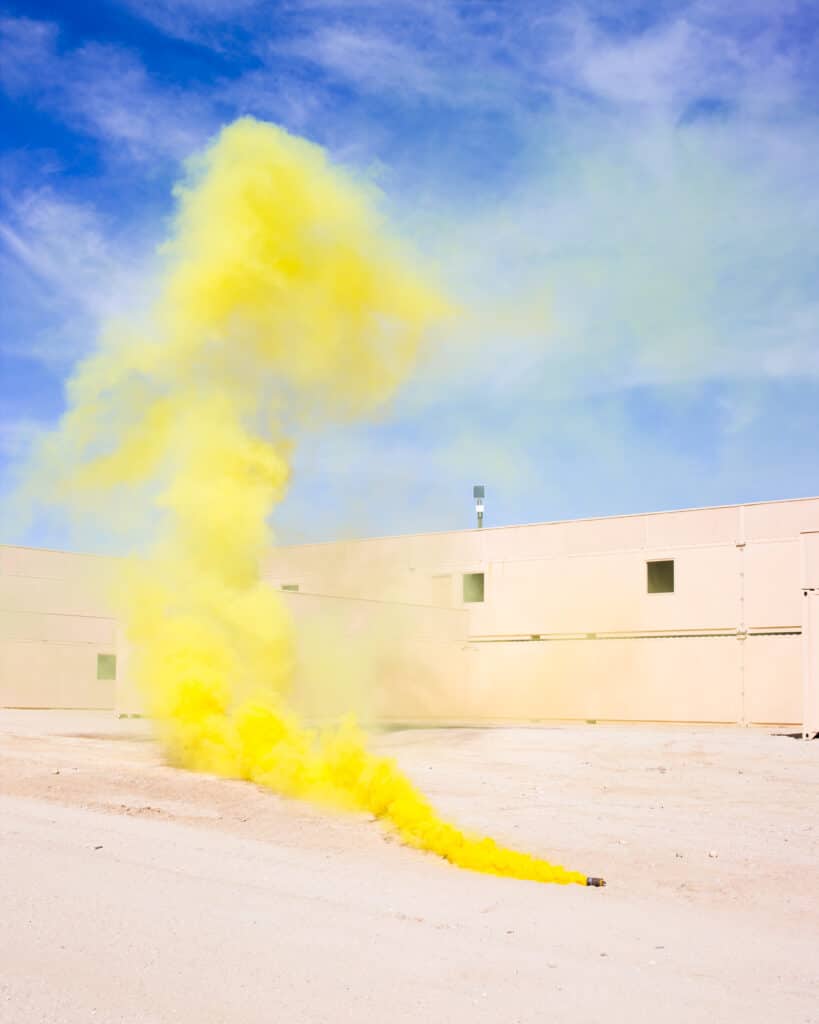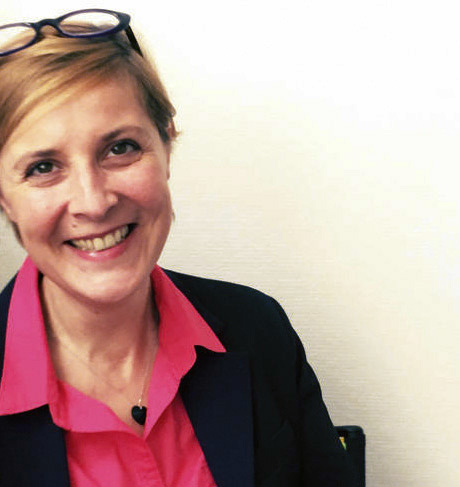In the four years since he took office, Rencontres d’Arles director Christoph Wiesner has often described the festival as a sounding board for both the world and photographic practices. This is evidenced in the themes of the 2023 and 2024 editions, Un état de conscience [A State of Consciousness] and Sous la surface [Beneath the Surface], respectively. This translates into a program privileging documentary photography, a genre that has radically evolved over the past two decades by blending reality and fiction. The transition from film to digital in the 2000s ushered in the age of images, revolutionizing both photography and printing, exponentially expanding creative possibilities and radically transforming the way images are exhibited.
Our journey begins with a classic photographer, Mary Ellen Mark (1940–2015), featured at Espace Van Gogh. The retrospective nature of the exhibition led the curators to organize it by series, emphasizing the major themes of her body of work and her distinctive approach. Describing her work, Mary Ellen Mark noted: “I want my photographs to deal with the essential emotions and feelings we all experience.”
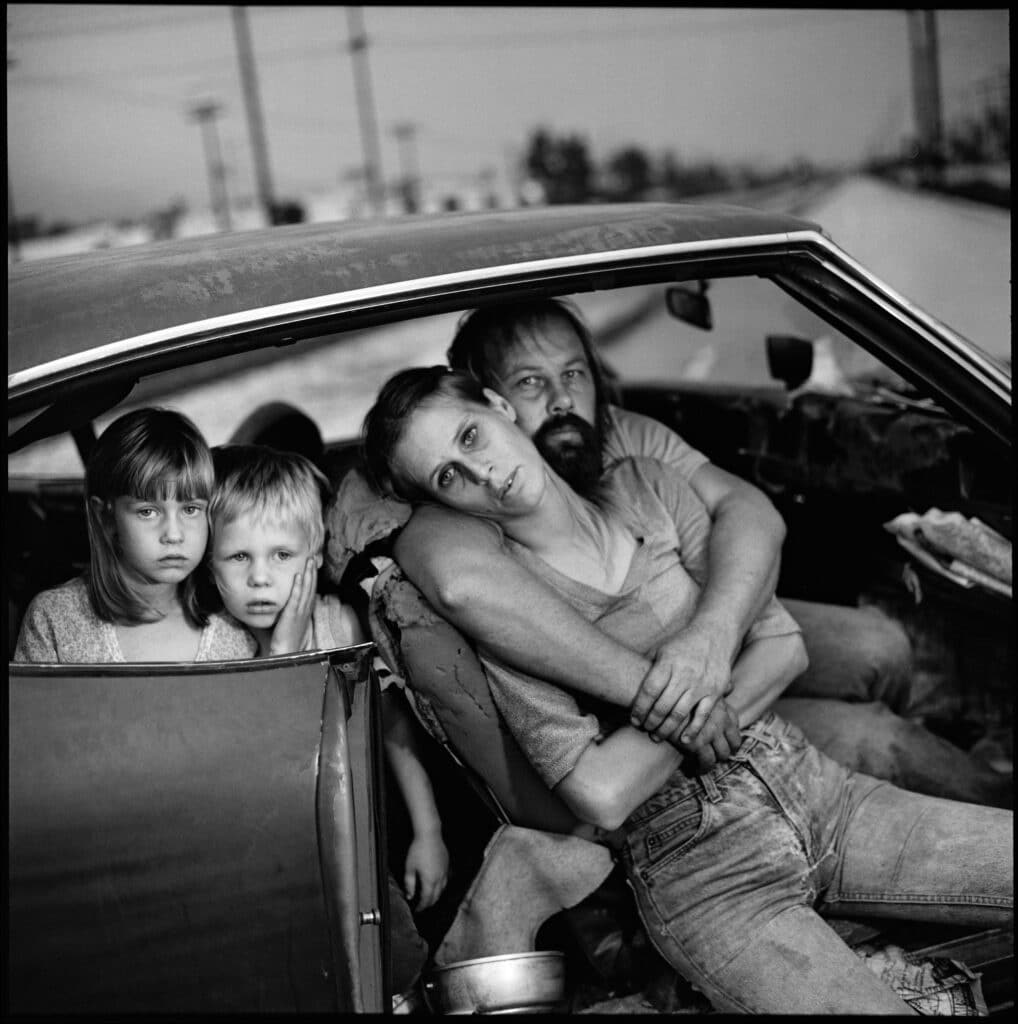
The exhibition rooms feature a succession of themes: women activists in the 1970s, Jeanette, the twins, prom, pediatrics, white supremacists, the women’s psychiatric ward at Oregon State Hospital where Mark spent six weeks, the Damm family, her color series on prostitution, her celebrity portraits, and more. Among all these long-term projects—a hallmark of documentary photography—it’s Erin Charles, also known as Tiny, whom she followed the longest, from 1983 to 2014. Her portrait in a black dress is highlighted in a larger format, as are most of the iconic images in this exhibition. The remaining black-and-white prints are framed and soberly aligned, encouraging viewers to engage individually with each of these deeply human “stories.” Display cases also present contact sheets, magazines, and books, allowing visitors to immerse themselves in the analog era, when photographers discovered their images only after developing the film.
A complete change of atmosphere comes with Cristina de Middel (b. 1975), a Spanish photographer based in Brazil and the current president of Magnum, who created one of the most successful installations in this edition. Her approach is emblematic of the evolution of documentary photography, which increasingly incorporates fiction and imagination. Like Mary Ellen Mark, she holds degrees in fine arts and photojournalism and works on long-term projects.
Begun in 2015, her Journey to the Center focuses on Mexican migration to the United States. Defying conventional portrayals of migrants, de Middel invites viewers to immerse themselves in an experience: the exhibition space in the Frères Prêcheurs church is divided by a picture rail, symbolizing the border—and the wall—separating the two countries.
![Cristina De Middel. Une pierre sur le chemin [Una Piedra en el Camino], série Voyage au centre, 2021. Avec l’aimable autorisation de l’artiste/Magnum Photos.](https://www.blind-magazine.com/wp-content/uploads/2024/07/2024-midd-11.jpg)
On the Mexico side, giant pillars support framed prints paired with oversized, vividly colored children’s playing cards, transparent prints suspended from the ceiling, and objects collected during her reporting, including migrants’ “uniform” for blending in unnoticed. On the US side, large canvas images in artificial hues, resembling both propaganda and billboards, depict a world that is as Edenic as it is nightmarish. By blending traditional reportage with fabricated images, Cristina de Middel not only offers a new perspective on migrants but also prompts us to reconsider our perception of reality and the limitations of photojournalism.
These explorations of the nature of images are also present in Debi Cornwall’s work, featured at Monoprix in a classic exhibition of traditionally aligned prints. A civil rights lawyer for over ten years before becoming a photographer, the American artist focuses on the representation of power and citizenship in the United States. Although her series Necessary Fictions and Model Citizens adhere to the principles of reportage, they depict situations that deceive the eye. Cornwall raises the question of the ambiguity of photography and warns us about the weight of images: “I invite viewers to be attentive to what they are shown, and to look at things in depth,” she explains.
This is precisely the attitude needed to absorb the exhibition by Randa Mirza (b. 1978), winner of the Photo Folio Review 2023, presented at the Maison des Peintres. Although not strictly a documentary photographer, Mirza’s work is rooted in the tangible reality of Lebanon’s history, marked by wars since her childhood between 1975 and 1990, and again in 2006. Like Debi Cornwall, Randa Mirza blurs the lines between reality and fiction but employs different techniques, notably collage.
The exhibition begins with Parallel Universes (2006): “I combine my own images of tourists with war photographs taken by reporters in the 1980s and 2006, two periods which for me correspond to traumatic memories,” Mirza explains. The contrast between the tourists’ frivolous attitudes and the backdrop of bomb explosions is both disconcerting and unsettling. This incongruity forces us to question what we are seeing. If you’re not careful, you can also be fooled by “Beirutopia.” This series, created over the past ten years, blends brand-new architecture—which are actually posters for reconstruction projects—with views of Beirut. “It helps to blur our spatio-temporal reference points and to question what is true and what is false, or what is representation,” the artist explains.
Reflections on the nature of images are at the heart of Stephen Dock’s (b. 1988) project entitled Echoes. The accompanying book’s subtitle makes this clear: Photography at a Distance from Conflict. A former conflict reporter trained in the field (starting at the age of twenty-two without assignments), Dock revisits his images taken in the Middle East. “This choice is not insignificant: this conflict is pivotal in the history of war photography as it corresponds to a new era where the Internet and cell phones allow images to be distributed instantly by everyone,” explains Audrey Hoareau, curator of the exhibition.
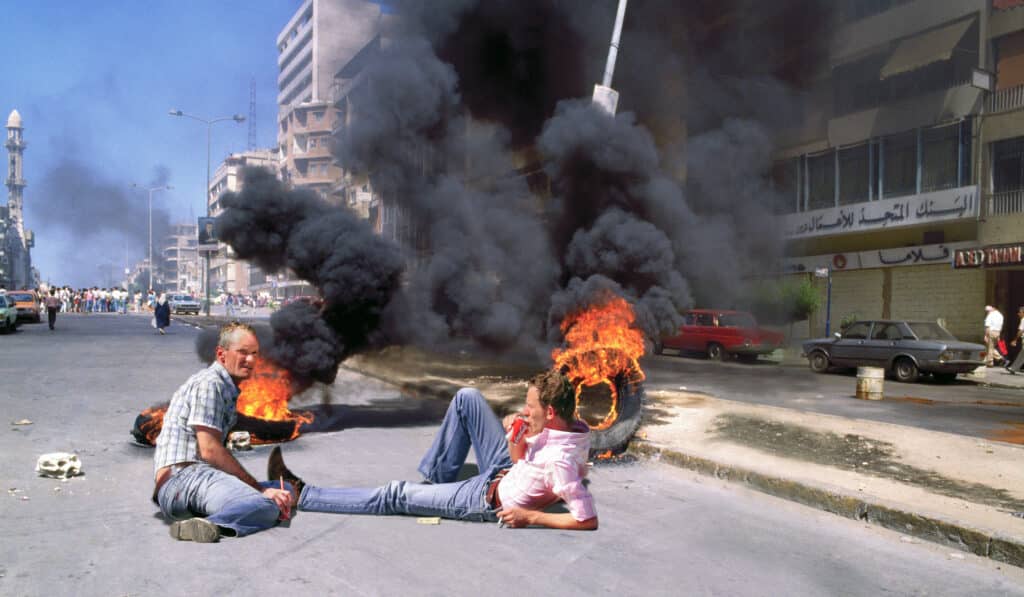
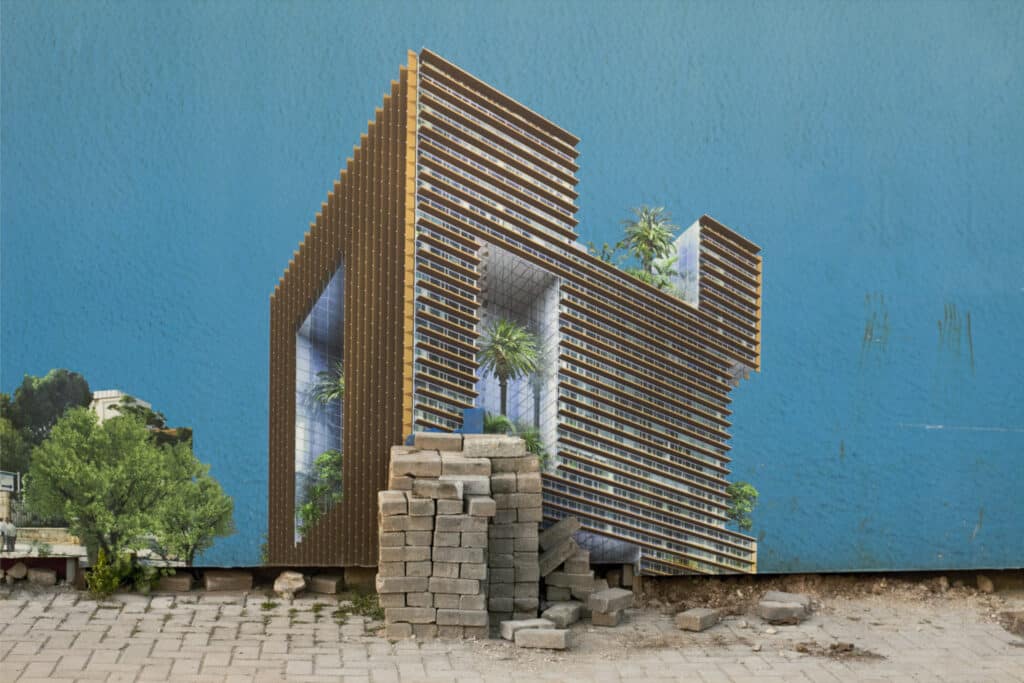
Dock’s aim was to reclaim his work, which he felt had been taken away from him as a reporter, and to break away from the codes imposed by the press. The exhibition features a succession of images, each reworked in a different way: through new editing, cropping, or enlarging “to create a closer relationship with the subject”; by altering the content, partially through photocopying, or completely by zooming in until only pixels, i.e., abstraction, are visible.
In this way, images take on new life through scenographic work and staging as installations in some cases, and manipulation in others. It’s no coincidence that, in an age when artificial intelligence is gaining ground, there is a growing number of documentary works questioning their legitimacy. It is the role of a festival like Les Rencontres d’Arles to showcase the diversity of these new forms of photographic expression.
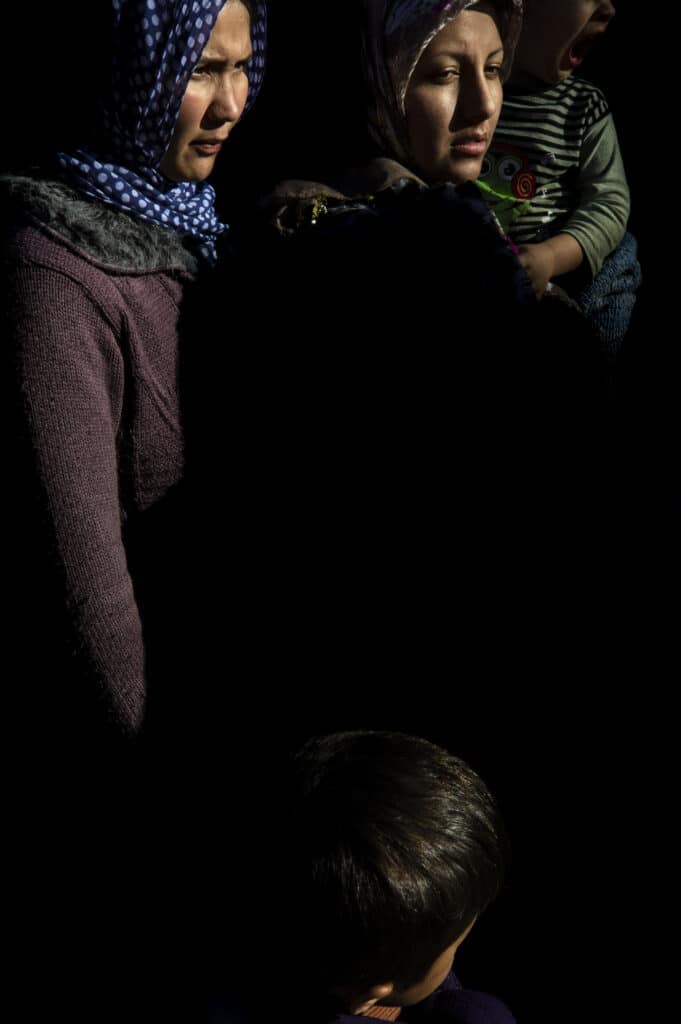
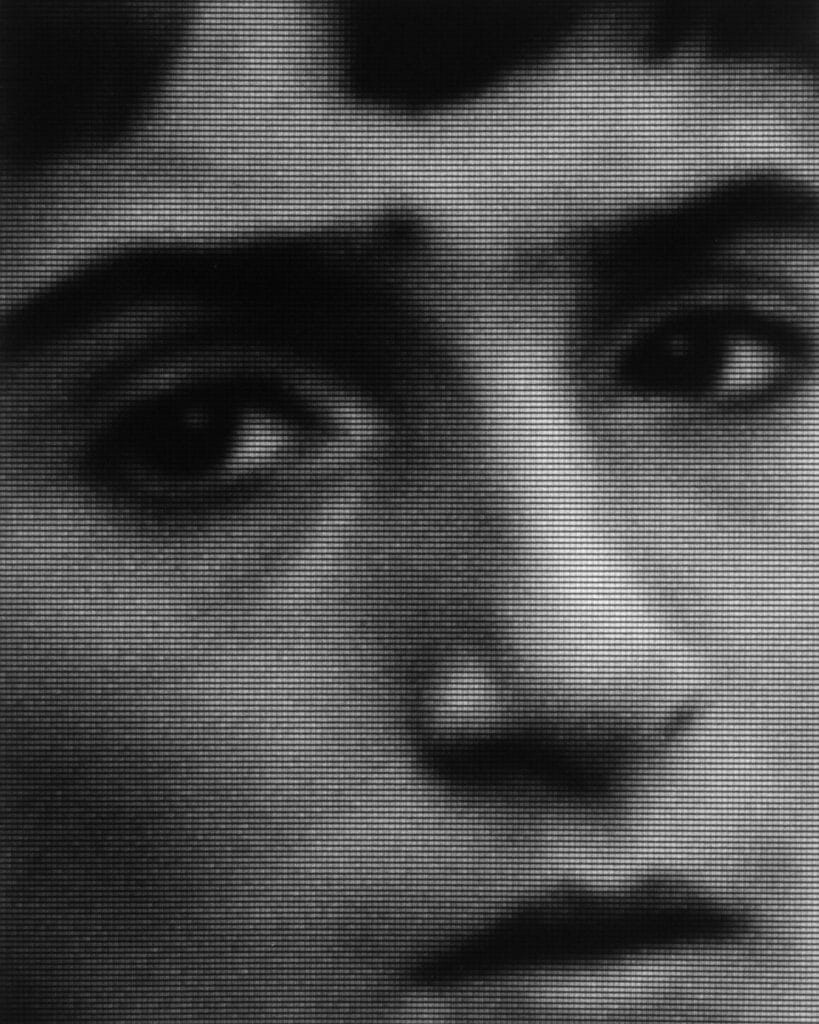

Les Rencontres d’Arles, Beneath the Surface, July 1 to September 29, 2024.
Catalog, published jointly by Les Rencontres d’Arles / Actes Sud. English and French.
360 pp., €48
Mary Ellen Mark
Mary Ellen Mark Rencontres, Espace Van Gogh
Catalog, featuring texts by Erfurt Stephan, Maddox Amanda, Panzer Mary, Schönegg Kathrin. Published jointly by C/O Berlin and Steidl, 232 pp., €48
Mary Ellen Mark, Photo Poche no. 96, Actes Sud, 144 pp., €14.50
Cristina de Middel
Journey to the Center, Église des Frères Prêcheurs
Voyage vers le center du monde, Textuel, 176 pp., €55
Debi Cornwall
Citoyens modèles, Espace Monoprix
Citoyens modèles, with texts by Vanessa Codaccioni and Kris Paulsen, Textuel, 216 pp., €55
Randa Mirza
Beirutopia, House of Painters
Beirutopia, with texts by Randa Mirza and Rasha Salti, 192 pp., Le Bec en l’air, €40
Stephen Dock
Echos, Cruise
Echos: La photographie à distance du conflit, text by Joan Fontcuberta, delpire & co., 120 pp., €39

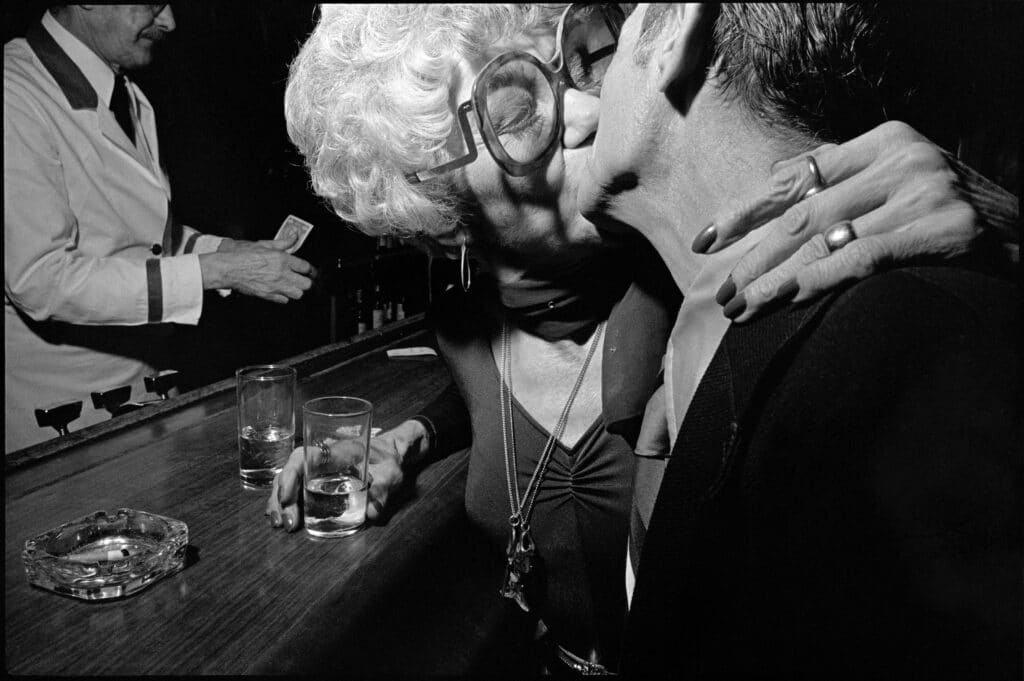
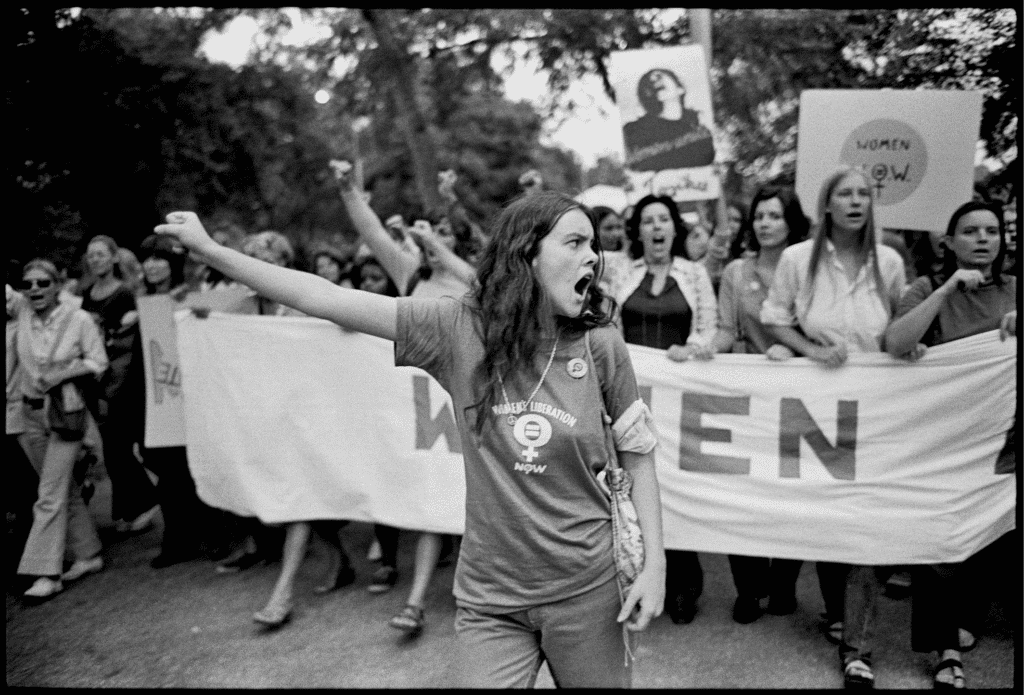
![Cristina De Middel. La porte noire [La Puerta Negra], série Voyage au centre, 2021. Avec l’aimable autorisation de l’artiste / Magnum Photos.](https://www.blind-magazine.com/wp-content/uploads/2024/07/2024-midd-10.jpg)
![Cristina De Middel. Revenir à nouveau [Volver Volver], série Voyage au centre, 2021. Avec l’aimable autorisation de l’artiste/Magnum Photos.](https://www.blind-magazine.com/wp-content/uploads/2024/07/2024-midd-04-826x1024.jpg)
![Cristina De Middel. Nuage voyageur [Nube Viajera], série Voyage au centre, 2021. Avec l’aimable autorisation de l’artiste / Magnum Photos.](https://www.blind-magazine.com/wp-content/uploads/2024/07/2024-midd-01.jpg)
![Cristina De Middel. Celle qui s’en est allée [La que se Fue], série Voyage au centre, 2021. Avec l’aimable autorisation de l’artiste / Magnum Photos.](https://www.blind-magazine.com/wp-content/uploads/2024/07/2024-midd-06.jpg)

